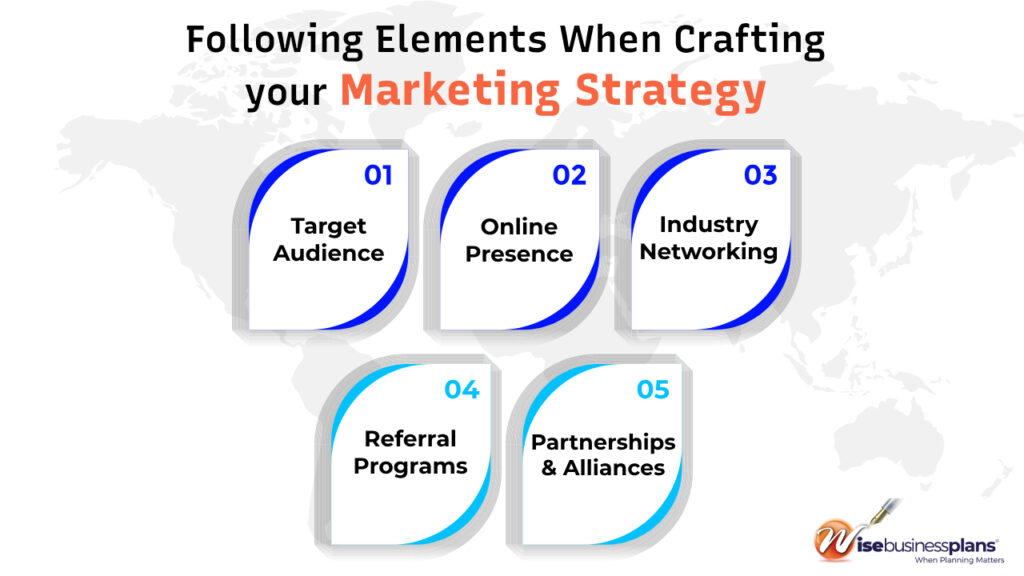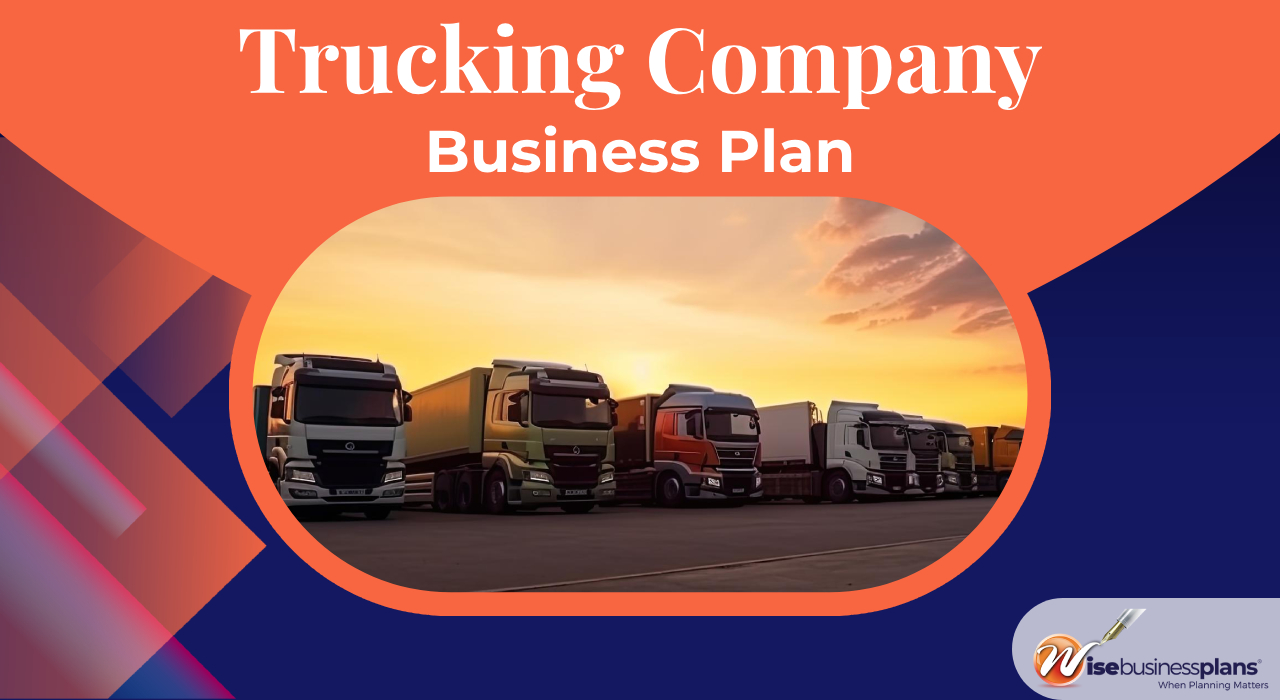Trucking Company Business Plan
In today’s fast-paced world, the trucking industry plays a vital role in transporting goods and ensuring efficient supply chains. If you’re considering starting your own trucking company, it’s essential to have a well-thought-out business plan. A traditional format for your trucking company business plan will provide a comprehensive framework for success. This article will guide you through the process of creating a business plan that covers all the necessary aspects of running a trucking company.
[lwptoc]
Executive Summary

The executive summary is a concise overview of your business plan and should highlight the key points of your trucking company. It should include information about your company’s mission, vision, target market, competitive advantage, and financial projections. The executive summary serves as an introduction to your business plan and should grab the reader’s attention while providing a clear understanding of your trucking company’s potential.
In the executive summary, include the following key points:
- Mission: Clearly state the mission of your trucking company, highlighting the problem it aims to solve or the value it provides to customers.
- Vision: Outline your long-term vision for the company, demonstrating your aspirations and goals.
- Target Market: Identify your target market, including the industries or sectors you plan to serve with your trucking services.
- Competitive Advantage: Describe the unique selling points that set your trucking company apart from competitors. This could include factors such as specialized services, advanced technology, strategic partnerships, or exceptional customer service.
- Financial Projections: Provide a summary of your financial projections, including revenue forecasts, projected expenses, and expected profitability. This will give readers an idea of the financial potential of your trucking company.
Create an engaging executive summary in no time!
Company Overview
In this section, provide detailed information about your trucking company. Include the company name, location, legal structure, and ownership details. Describe the background and experience of the founders or management team, highlighting their qualifications and expertise in the transportation and logistics industry.
Furthermore, discuss your company’s mission and values, emphasizing how they align with the needs and expectations of your target market. Explain the specific services your trucking company will offer, such as long-haul transportation, dedicated freight, or specialized logistics solutions.
Market Analysis
Conduct a thorough market analysis to understand the industry trends, competition, and potential customers. Identify your target market, including the industries you will serve and the geographical areas you will cover. Analyze the demand for trucking services in your target market and assess the competitive landscape. Understand the regulatory environment and any specific requirements or restrictions that may impact your operations. This analysis will help you position your trucking company effectively and identify growth opportunities.
Some key points to cover in this section include:
- Market Size and Growth: Determine the current size of the trucking market and its projected growth rate. This will help you assess the market’s potential and identify areas of opportunity.
- Target Market Segmentation: Define your target market segments based on factors such as industry, geographic location, or specific transportation needs. This will allow you to tailor your services and marketing efforts to the needs of different customer groups.
- Competitive Analysis: Identify and analyze your competitors, including both large and small trucking companies. Evaluate their strengths, weaknesses, and market positioning to understand how you can differentiate your business.
- Regulatory Environment: Research the regulations and compliance requirements specific to the trucking industry, such as licensing, permits, and safety standards. Ensure that your business plan addresses these regulations and demonstrates your commitment to operating legally and safely.

Services and Offerings
Describe the specific services and offerings your trucking company will provide. This can include transportation of goods, logistics management, warehousing, or value-added services. Highlight any specialized services or niche markets you plan to target, such as temperature-controlled transport or hazardous materials handling. Clearly outline the pricing structure for your services and any unique features that set your trucking company apart from competitors. Consider including case studies or success stories to showcase your capabilities.
In this section, you will outline the specific services and offerings that your trucking company will provide. This may include:
Transportation Services: Describe the types of transportation services you will offer, such as full truckload (FTL), less-than-truckload (LTL), refrigerated transport, or specialized hauling.
Logistics Solutions: Explain any additional logistics services you will provide, such as warehousing, distribution, or freight brokerage.
Technology Integration: Highlight how you plan to leverage technology to streamline operations, enhance efficiency, and provide real-time tracking and visibility to customers.
Safety and Compliance: Emphasize your commitment to safety and regulatory compliance. Outline the measures you will take to ensure driver safety, equipment maintenance, and adherence to industry regulations.
Hire professionals who writes business plans!
Marketing Strategy

Develop a comprehensive marketing strategy to promote your trucking company and attract clients. Identify the most effective channels to reach your target market, such as online advertising, industry trade shows, or direct sales. Utilize digital marketing techniques, including search engine optimization (SEO) and social media marketing, to increase your online visibility and generate leads. Build relationships with industry influencers, freight brokers, and potential customers to establish a strong network. Consider offering promotional discounts or incentives to attract new clients.
Consider the following elements when crafting your marketing strategy:
- Target Audience: Identify your target audience based on industry, location, or specific transportation needs. This will allow you to tailor your marketing messages and tactics to resonate with your ideal customers.
- Online Presence: Establish a professional website that showcases your services, expertise, and unique value proposition. Implement search engine optimization (SEO) strategies to improve your website’s visibility in search engine results. Leverage social media platforms to engage with your target audience and share industry insights.
- Industry Networking: Attend industry events, conferences, and trade shows to connect with potential customers, suppliers, and partners. Join industry associations to enhance your credibility and access networking opportunities.
- Referral Programs: Develop referral programs to encourage satisfied customers to refer your trucking services to others. Offer incentives or rewards for successful referrals.
- Partnerships and Alliances: Explore partnerships with complementary businesses, such as freight brokers, warehousing providers, or logistics software companies. Collaborating with these entities can expand your reach and provide additional value to your customers.
Discover our professional business plan examples now!
Operational Plan
The operational plan outlines the day-to-day operations of your trucking company. Describe the equipment and facilities you will need, including trucks, trailers, maintenance facilities, and technology systems. Develop a plan for driver recruitment and training, ensuring compliance with regulations and safety standards. Discuss your approach to fleet management, maintenance schedules, and fuel efficiency. Outline your processes for dispatching, tracking shipments, and handling customer inquiries. Include contingency plans for unforeseen circumstances, such as equipment breakdowns or natural disasters.
It includes details about the following aspects:
- Fleet Management: Specify the number and types of trucks and trailers you will operate. Outline your strategy for acquiring, maintaining, and replacing your fleet.
- Driver Recruitment and Training: Describe your approach to recruiting, hiring, and training drivers. Emphasize the importance of hiring qualified and experienced drivers who prioritize safety and customer service.
- Dispatch and Routing: Explain your procedures for dispatching trucks, managing routes, and optimizing efficiency. Discuss how you will leverage technology and software solutions to streamline these processes.
- Customer Service: Outline your customer service approach, including how you will handle inquiries, track shipments, and resolve any issues or complaints.
- Quality Control: Describe your quality control measures, such as regular maintenance inspections, driver performance evaluations, and adherence to industry safety standards.
- Technology and Systems: Discuss the technology systems you will utilize to enhance operational efficiency, such as fleet management software, GPS tracking, and electronic logging devices (ELDs)
Organizational Structure
Define the organizational structure of your trucking company. Identify key management roles and responsibilities, including the CEO, operations manager, dispatchers, and drivers. Outline the qualifications and experience required for each role. Consider including an organizational chart to provide a visual representation of the reporting structure within your company. Emphasize the importance of safety protocols and employee training to ensure smooth operations. Establish communication channels and decision-making processes to foster efficiency and accountability within your organization.
This includes identifying key management roles and their respective responsibilities. Here are additional details to include in this section:
- CEO: The CEO sets direction, leads operations, and makes key decisions. They need transportation industry experience and strong leadership skills.
- Operations Manager: Oversees daily operations, dispatch, driver scheduling, route optimization, and fleet management. Requires expertise in logistics, strong organization, and problem-solving skills.
- Dispatchers: Coordinate driver schedules and routes for timely and efficient delivery. Require strong communication, handling pressure, and transportation logistics skills. Proficiency in dispatch software and understanding of geography and traffic patterns are essential.
- Drivers: Transport goods safely and on time. Emphasize hiring qualified drivers with CDL, clean record, strong navigation skills, and safety commitment.
Act now and explore your eligibility for the Wise net 30 Business Line of Credit!
3. Keep expenses below revenue
Keeping expenses below revenue is crucial for any business looking to ensure they are cash flow positive. However, if you’re spending more than you’re earning, you may have to rely on external financing, like loans or investments, to stay afloat. This offset can put you in a cycle of debt and potentially jeopardize your company’s future.
To keep expenses below revenue and maintain financial stability, consider any of the following tips:
- Track all expenses to help identify areas where you can cut costs.
- Prioritize essential business expenses.
- Negotiate with vendors for better pricing and payment terms, or switch to lower-cost vendors.
- Consider outsourcing specific tasks to contractors to save on employee-related fees.
- Use budgeting tools to help manage your finances and keep costs in check.
Financial Plan
- The financial plan is a critical component of your trucking company business plan. It includes projected revenue, expenses, and profitability over a specific period. Develop a comprehensive financial forecast that covers startup costs, operational expenses, driver salaries, fuel costs, insurance, maintenance, and marketing expenditures. Determine your pricing strategy and estimate the number of clients and shipments needed to achieve your financial goals. Include contingency plans for unexpected expenses or fluctuations in the market. Use financial ratios and benchmarks to assess the financial health of your trucking company.
- Here are additional details to include:
- Startup Costs: Identify the initial investment required to launch your trucking company.
- Operational Expenses: Estimate the ongoing costs to run your business, including driver salaries, fuel, maintenance, insurance, and administrative expenses.
- Revenue Forecast: Develop a realistic projection of your revenue based on factors such as clients, shipment volume, pricing strategy, and market demand.
- Pricing Strategy: Determine competitive pricing while ensuring profitability.
- Client Acquisition: Estimate the number of clients and shipments needed to achieve your revenue goals.
- Financial Projections: Create income statements, balance sheets, and cash flow statements to project financial performance.
- Contingency Plans: Account for unexpected expenses or market fluctuations.
- Financial Ratios: Use ratios and benchmarks to assess your company’s financial health.
Category
- Startup Costs
- Operational Expense
- Marketing Expense
- Administrative
- Costs Contingency Fund
Expenses
- Vehicle acquisition, licensing fees, permits, etc.
- Driver salaries, fuel, maintenance, insurance, etc.
- Advertising, promotions, website development, etc.
- Office rent, utilities, software subscriptions, etc.
- Reserve for unexpected expenses and market changes.
Pricing Strategy
- Distance-based
- Shipment Size
- Market Competitive
- Customer Specific
Estimated Pricing for Services
- Rates determined by distance traveled.
- Pricing tiers based on shipment volume or weight.
- Align pricing with industry standards and competitors.
- Tailored pricing based on individual client needs.
Get our sample trucking business plan now and take your business plan to pro level.
Risk Management
Assess the potential risks and challenges your trucking company may face and develop a risk management strategy. Identify risks related to regulations, accidents, fuel price fluctuations, or economic downturns. Develop strategies to mitigate these risks, such as maintaining appropriate insurance coverage, implementing safety protocols, and diversifying your client base. Regularly review and update your risk management plan to adapt to changing industry conditions. Establish a safety culture within your organization and provide ongoing training for drivers and staff.
Conclusion
In conclusion, starting a trucking company requires careful planning and execution. By following a traditional format for your business plan, you can create a roadmap for success. Address all the essential aspects, including company overview, market analysis, services, marketing strategy, operations, organization, finances, and risk management. With a well-defined business plan, you’ll be better equipped to navigate the challenges of the trucking industry and achieve long-term success.
FAQs:
The key elements include an executive summary, company overview, market analysis, services and offerings, marketing strategy, operational plan, organizational structure, financial plan, and risk management.
You can differentiate your trucking company by offering specialized services, focusing on niche markets, providing excellent customer service, and emphasizing safety and reliability.
Effective marketing strategies for a trucking company include online advertising, search engine optimization (SEO), social media marketing, participation in industry trade shows, and building relationships with potential customers and freight brokers.
Plan for driver recruitment and training by defining the qualifications and experience required, conducting thorough background checks, providing comprehensive training programs, and ensuring compliance with regulations and safety standards.
Important financial factors include startup costs, operational expenses, projected revenue and profitability, driver salaries, fuel costs, insurance, maintenance, and contingency plans for unexpected expenses or market fluctuations.












